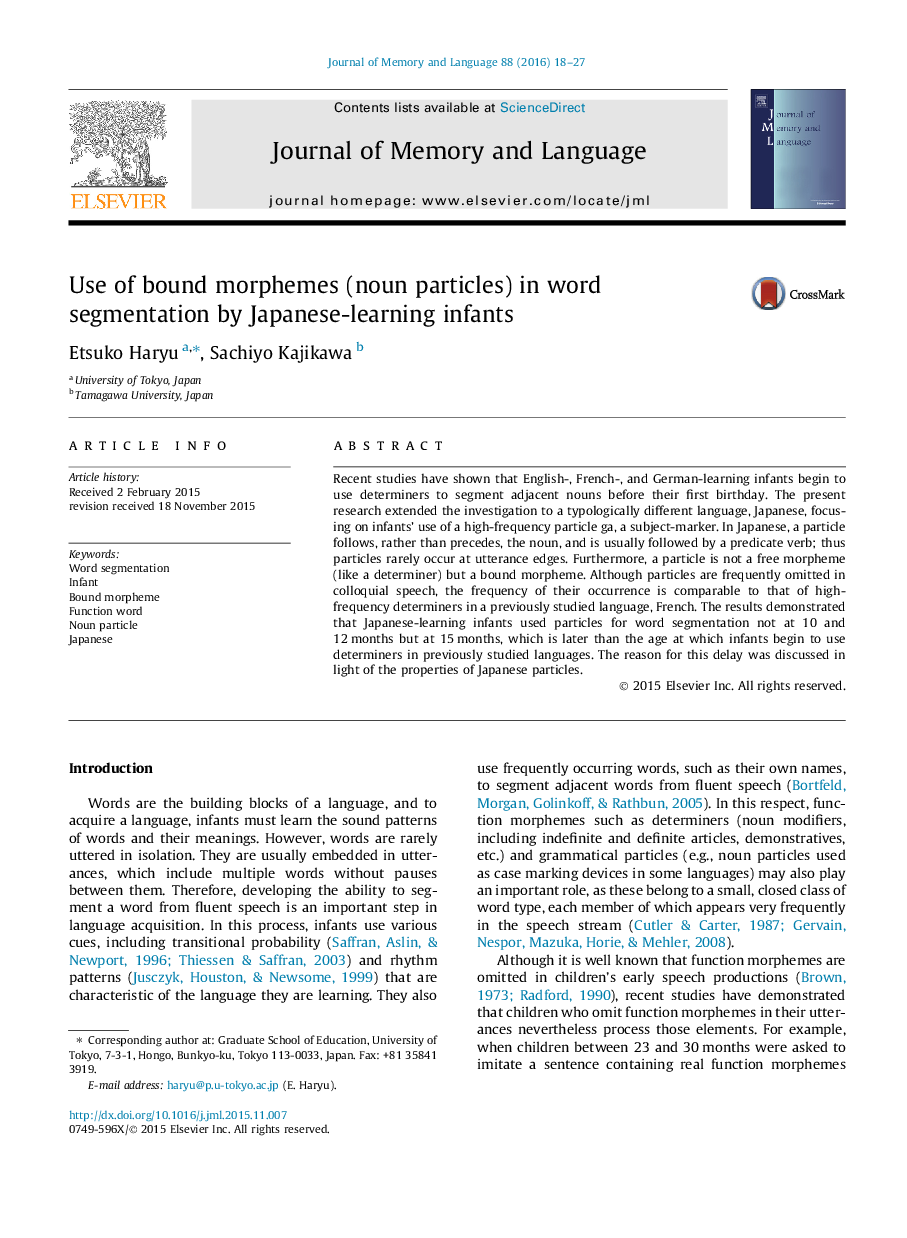| کد مقاله | کد نشریه | سال انتشار | مقاله انگلیسی | نسخه تمام متن |
|---|---|---|---|---|
| 7296915 | 1474631 | 2016 | 10 صفحه PDF | دانلود رایگان |
عنوان انگلیسی مقاله ISI
Use of bound morphemes (noun particles) in word segmentation by Japanese-learning infants
ترجمه فارسی عنوان
استفاده از مورفوم محدود (ذرات اسم) در تقسیم کلمه توسط نوزادان یادگیر ژاپنی
دانلود مقاله + سفارش ترجمه
دانلود مقاله ISI انگلیسی
رایگان برای ایرانیان
کلمات کلیدی
تقسیم کلمه، نوزاد مورفوم متضاد، کلمه تابع ذره ذره، ژاپنی،
موضوعات مرتبط
علوم زیستی و بیوفناوری
علم عصب شناسی
علوم اعصاب شناختی
چکیده انگلیسی
Recent studies have shown that English-, French-, and German-learning infants begin to use determiners to segment adjacent nouns before their first birthday. The present research extended the investigation to a typologically different language, Japanese, focusing on infants' use of a high-frequency particle ga, a subject-marker. In Japanese, a particle follows, rather than precedes, the noun, and is usually followed by a predicate verb; thus particles rarely occur at utterance edges. Furthermore, a particle is not a free morpheme (like a determiner) but a bound morpheme. Although particles are frequently omitted in colloquial speech, the frequency of their occurrence is comparable to that of high-frequency determiners in a previously studied language, French. The results demonstrated that Japanese-learning infants used particles for word segmentation not at 10 and 12Â months but at 15Â months, which is later than the age at which infants begin to use determiners in previously studied languages. The reason for this delay was discussed in light of the properties of Japanese particles.
ناشر
Database: Elsevier - ScienceDirect (ساینس دایرکت)
Journal: Journal of Memory and Language - Volume 88, June 2016, Pages 18-27
Journal: Journal of Memory and Language - Volume 88, June 2016, Pages 18-27
نویسندگان
Etsuko Haryu, Sachiyo Kajikawa,
